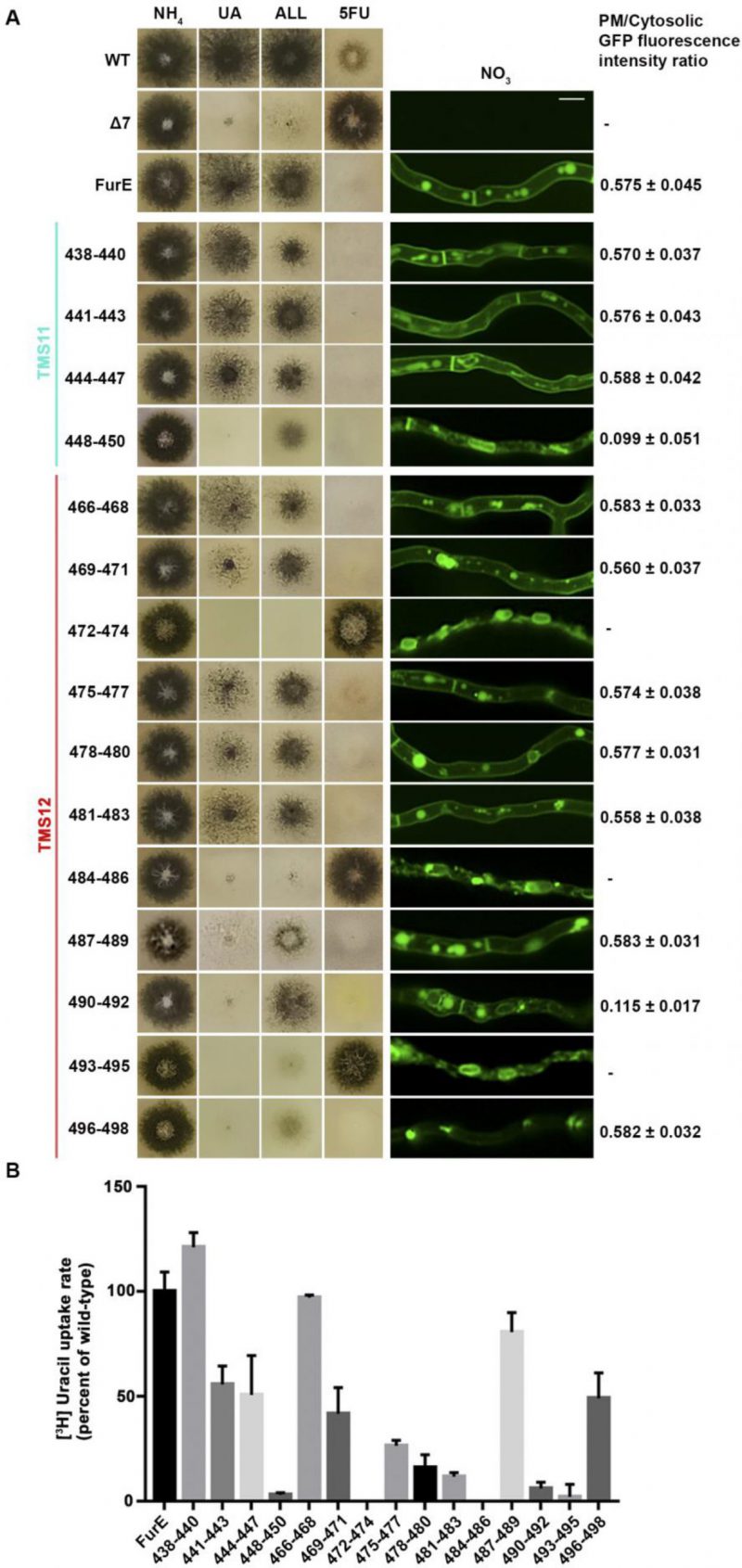Back to article: The last two transmembrane helices in the APC-type FurE transporter act as an intramolecular chaperone essential for concentrative ER-exit
FIGURE 2: Functional analysis of triple Ala mutations in TMS11 and TMS12. (A) Left panel: Growth tests of control strains and strains expressing GFP-tagged mutant FurE versions with triple alanine substitutions that cover the entire length of TMS11 and TMS12. WT is a standard A. nidulans wild-type strain. Δ7 is the negative control strain lacking all major nucleobase transporter and not expressing FurE. FurE is the positive control strain, which is a Δ7 strain functionally expressing FurE via the gpdA promoter. All mutant strains are isogenic to the positive control strain, also express-ing FurE versions from the gpdA promoter. Mutants are named by the number of residues substituted by Ala. Growth tests were performed on minimal media (MM) supplemented with ammonium (NH4), uric acid (UA), allantoin (ALL) as nitrogen sources or on MM containing NO3 and the toxic analogue 5-fluorouracil (5FU). Middle panel: Epifluorescence microscopy images of the same control and mutant strains. Scale bar is 5 μM. Right panel: PM/cytosol GFP fluorescence intensity ratios. 95% confidence intervals are pre-sented. For details see methods. (B) Ra-diolabeled uracil uptake rates, expressed as % of wt FurE rate, of strains expressing triple alanine substituted versions. For details see Materials and Methods.

